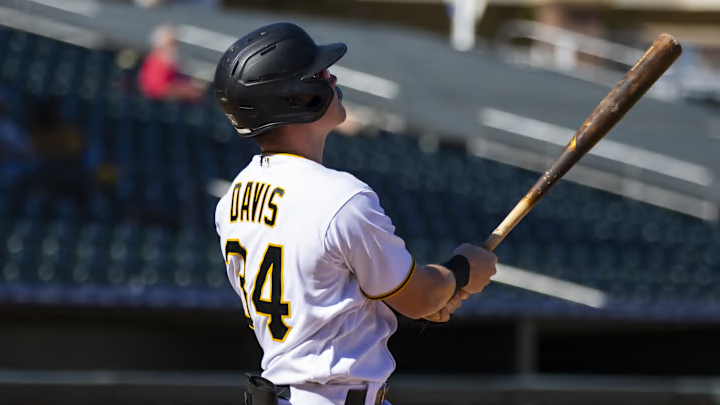Jun-Seok Shim
The Pittsburgh Pirates signed one of their biggest minor league additions this past off-season by acquiring Jun-Seok Shim. Coming out of South Korea, Shim opted to forgo the KBO draft and head to the United States for an opportunity with a Major League club. The Pirates inked the South Korean right-hander to a $750,000 signing bonus.
Shim may have one of the highest ceilings in the organization. At just 18, he's already topping out at 100 MPH. He typically sits around 94-97 MPH but can reach back for more velocity when he needs to. His best secondary offering is his 12-6 curveball. Both his slider and changeup have flashed the potential to be average third and fourth offerings in his arsenal.
One promising aspect of his game is his ability to spin his fastball and curveball. He's able to generate high spin rates with his two primary offerings, which help his fastball ride through the zone, and his curveball generate its 12-6 shape. The one thing he needs to sharpen up is his command. But there is hope that the young right-hander will be able to improve upon that aspect of his game.
Shim is an athletic pitcher with a 6'4", 215-LBS frame. He also has good mechanics, with MLB Pipeline praising his 'clean arm action.' These two traits may help Shim develop his command to an above-average degree. If that's possible, you're looking at a kid who can run his fastball into the upper-90s and with location to boot.
Most international prospects start their professional careers at a short-season level, like the Dominican Summer League or Florida Complex League. But Shim isn't as young as most international signees. He'll turn 19 on April 9th, making him older than other players in the same international class, like Ethan Salas (16), Joendry Vargas (17), and Enmanuel Bonilla (17). But Shim would be a little younger than the average Florida State League player, at least from last season. The average age of batters was 21.2 years old, while the average age of pitchers was 22.
While you don't want to rush Shim, he's also not your average 19-year-old pitching prospect. How many teenagers can boast they have hit 100 MPH? Shim's stuff would easily play at Bradenton next season. Plus, seeing how he plays in an extended, full season rather than just half of the year would be interesting.
